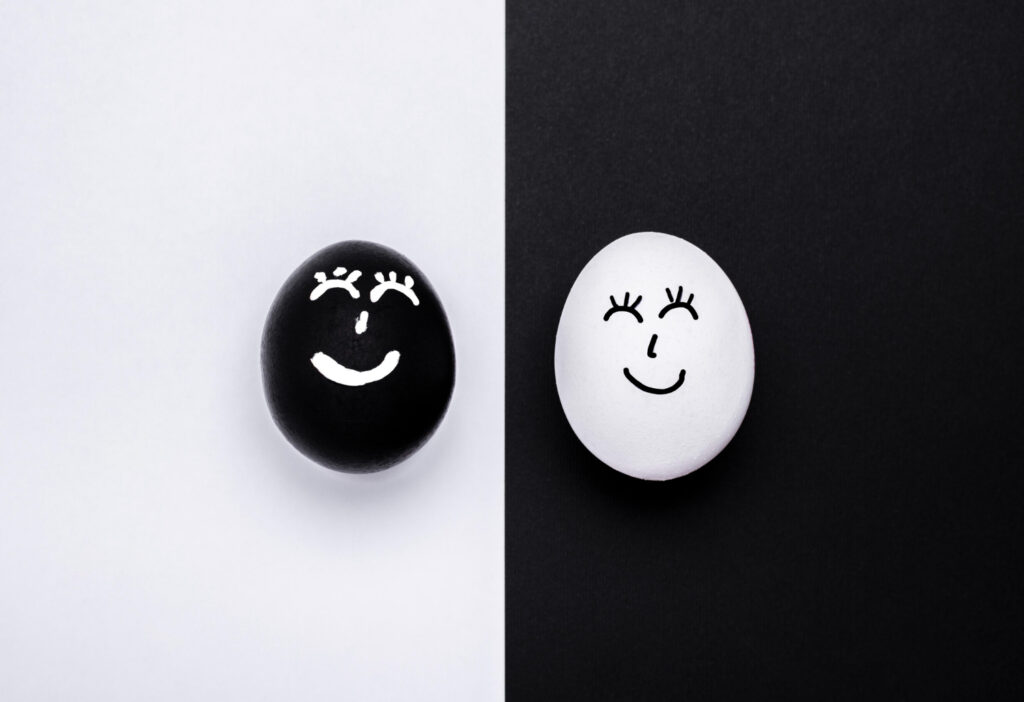Understanding Positive and Negative Space
May, 2024
5.59M

Angely Colmenares
The world of visual design is a captivating dance between elements and the spaces they inhabit. While our eyes are naturally drawn to the vibrant colors and bold shapes that fill the canvas, a lesser-known player often holds the key to a truly compelling composition: negative space. This blog delves into the fascinating concepts of positive and negative space, exploring their definitions, their intricate relationship, and their powerful influence on visual harmony.

Demystifying Positive Space: The Star of the Show
Imagine a captivating painting of a lone lighthouse perched on a rocky cliff. The majestic lighthouse, bathed in the warm glow of the setting sun, is the positive space. It’s the focal point, the element that immediately captures our attention and sets the stage for the narrative the artist wants to tell. Positive space can encompass anything from a single object to a complex scene, but it’s the element that takes center stage and demands the viewer’s focus.
Negative Space: The Power of Absence
Now, shift your gaze from the lighthouse and explore the vast expanse of the ocean and sky surrounding it. This seemingly empty area, often referred to as negative space, plays a crucial role in the composition. It’s not truly void, but rather a vital element that defines the shape, weight, and position of the positive space. The negative space allows the lighthouse to stand out, highlighting its solitary grandeur against the vastness of the natural world.
A Delicate Dance: Positive and Negative Space in Harmony
These two seemingly opposing forces – the presence of positive space and the absence of negative space – work together in a beautiful and symbiotic relationship. Their balance and interaction are fundamental to creating visually compelling designs.
Defining the Subject
Negative space acts like a spotlight, isolating and emphasizing the positive space. It ensures that the main elements don’t get lost in a cluttered visual field and effectively capture the viewer’s attention.
Creating Visual Harmony
well-composed artwork or design strikes a delicate balance between positive and negative space. Imagine a minimalist painting with just a single, small object placed in the center of a vast canvas. While the negative space allows the object to stand out, too much emptiness can leave the composition feeling sterile and uneventful. Conversely, cramming the canvas with positive space elements can create a sense of visual clutter and overwhelm the viewer.
Evoking Emotion and Meaning
The interplay between positive and negative space can go beyond mere aesthetics and influence the emotional impact of a design. A tightly packed composition with minimal negative space might evoke a sense of tension or claustrophobia, while a design with ample negative space could convey feelings of calmness, serenity, or vastness. Artists and designers can leverage this power to create specific moods and guide the viewer’s interpretation of the artwork.

Beyond the Canvas: The Universality of Positive and Negative Space
The concepts of positive and negative space extend far beyond the realm of traditional art. They are fundamental principles applied in various design disciplines:
Graphic Design
Layouts in magazines, brochures, and websites utilize positive and negative space to guide the viewer’s eye through the information hierarchy. Images and text blocks are strategically placed within the negative space to create a clear visual flow and highlight key elements.
Photography
The arrangement of subjects within the frame is just as important as the subjects themselves. The photographer uses negative space to create a sense of depth, isolate the subject, or lead the viewer’s eye through the image.
Architecture
The placement of buildings, the design of courtyards, and the use of negative space all contribute to the overall experience of an architectural space. Negative space can create a sense of openness and grandeur or provide pockets of intimacy and relaxation.
By understanding and appreciating the interplay between positive and negative space, designers and artists gain a powerful tool to create visually engaging compositions. They can guide the viewer’s eye, evoke desired emotions, and craft experiences that resonate on a deeper level. Remember, sometimes, the most impactful element in a design isn’t what’s there, but rather the space that allows everything else to shine.

Related Episodes
1.20 min
episode 02
The sweetest music this side of heaven
1.20 min
episode 02
The sweetest music this side of heaven
Support the show on Elecast
Enjoy listening to our podcast? Consider making a donation!

Leave a Reply